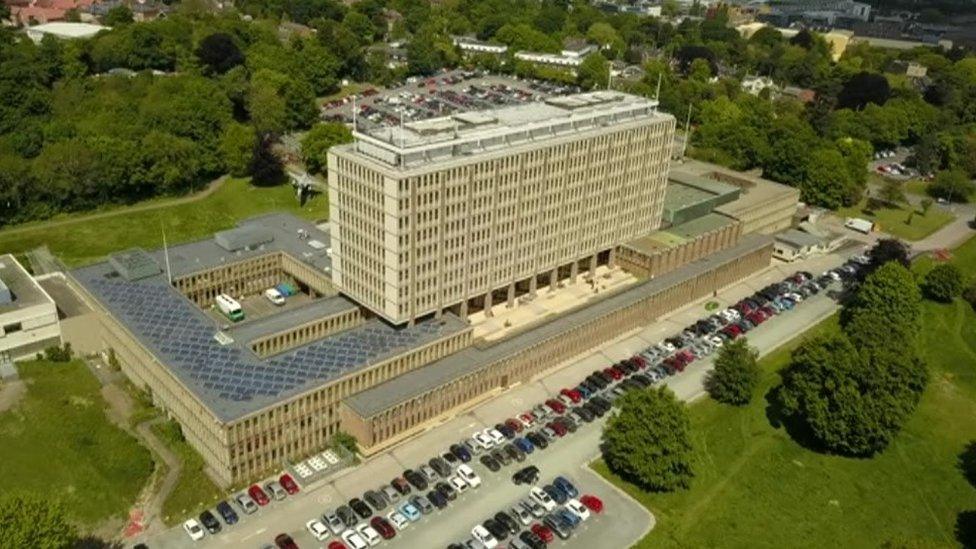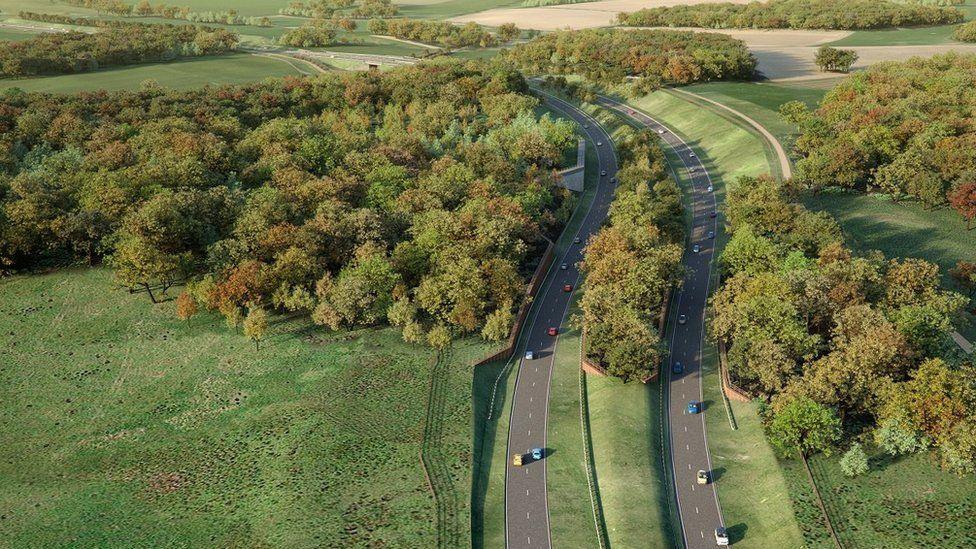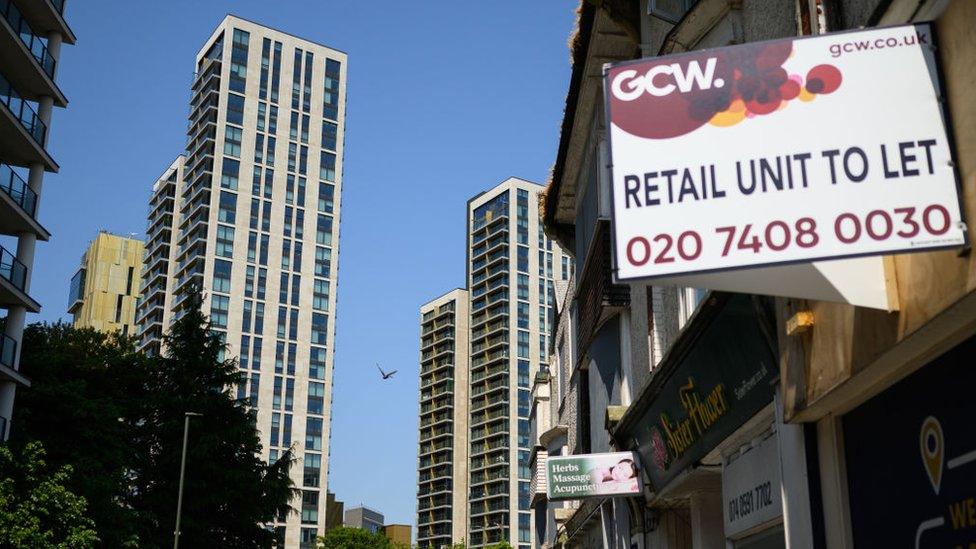Norfolk councils' borrowing stands at almost £1.5bn
- Published

Norfolk County Council has the most debt of all the Norfolk authorities
Authorities across Norfolk are sitting on more than a billion pounds of combined debt, analysis of government data by the BBC has revealed.
The area's eight local authorities have borrowed a total of £1,147,221,000.
But why have they taken out the loans?

Councils borrow money for a variety of purposes, such as building new schools and roads.
Over the past decade the amount of funding from government has not kept pace with demand for services, like adult social care, councils said.
The BBC found most of their borrowing comes from the Public Works Loan Board, external (PWLB), a government body offering a much lower rate of interest than a bank.

Norfolk County Council says it borrowed cash to fund capital programmes like new roads
How much debt does each council have?
Analysis of the BBC figures shows the Norfolk council sitting on the most debt is Norfolk County Council, with £828.7m.
Norwich City Council has has borrowed £207.1m.
Great Yarmouth is third with around £81.3m worth of debt.
South Norfolk has borrowed £20m and West Norfolk £10m.
Three councils - Breckland, North Norfolk and Broadland - have no debt at all.
Why do Norwich and Great Yarmouth have so much debt?
The reason for the high level of debt is that the government effectively made them buy their existing social housing stock in 2012, according to the Local Democracy Reporting Service.
While most councils in Norfolk sold their stock, either through 'right to buy' or to housing associations, Norwich and Great Yarmouth decided to purchase at least some of their homes.
This allowed them to keep some of the rent received from their social housing, with the rent used to pay for servicing the loan.
Great Yarmouth had 5,736 council homes as of March last year, while Norwich had about 14,500.
In total, £58.4m of Great Yarmouth's debt is housing-related.

Norwich City Council borrowed money to invest in properties outside the area to raise money for local spending
What about the rest of the debt?
Unlike most authorities in Norfolk, City Hall also borrowed millions of pounds to fund investments, many of which were outside of Norwich.
This included a gym in Kent, a cold store unit in Corby and a Travelodge in Harlow.
The council owns the freehold to the buildings, which are then let out to tenants.
Borrowing to invest in this way is no longer allowed under government rules.
City Hall has also taken out loans to fund things like building new homes locally.
Yarmouth council insists it had not borrowed to invest, with extra borrowing being entirely for its capital projects.
Why does County Hall have so much debt?
Officials at Norfolk County Council have said all the borrowing has been to fund its capital programme, for assets which enable services to be delivered, for example, schools, roads, bridges, libraries and museums.
None of the cash has been used to invest in property outside of running the council's services.
The interest payable on its current borrowing is £28.5m per year. In 2016/17 the authority was paying £25.7m.
Are any Norfolk councils at risk?
Seven councils across the UK have declared themselves effectively bankrupt after they were unable to balance their budgets since 2020, including three last year.
But officials at Norfolk councils have explicitly stated they are not at risk of declaring effective bankruptcy.
Some councils, such as Thurrock in Essex, have then gambled on risky investments as part of an attempt to bring in extra income.
How do Norfolk councils compare?
The levels of debt in Norfolk, particularly in the city district councils, are far below those of many authorities elsewhere around the country.
In terms of total borrowing, County Hall sits as the 25th most debt-laden authority in the UK, but per person it is 185th.
What have other councils said?
King's Lynn and West Norfolk Borough Council which has a loan debt of £10m said it "only borrows towards its capital programme".
South Norfolk cabinet member Richard Elliott said the council borrowed £20m from the PWLB "at very advantageous rates, an average of 2.4%".

Follow East of England news on Facebook, external, Instagram, external and X, external. Got a story? Email eastofenglandnews@bbc.co.uk, external or WhatsApp 0800 169 1830
- Published16 January 2024

- Published18 December 2023

- Published29 November 2023
